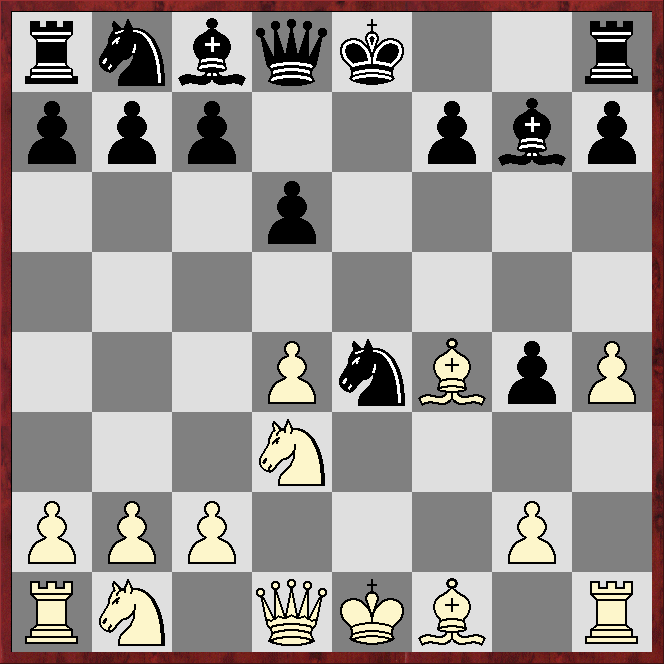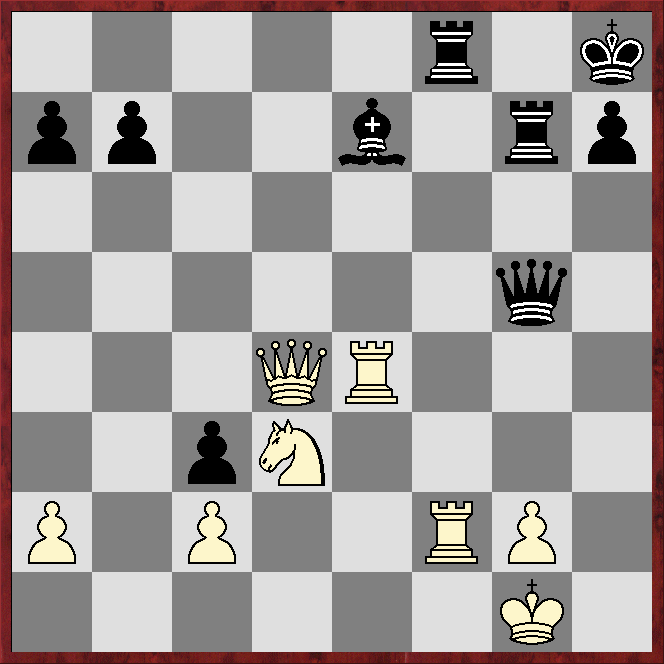Boris Spassky - Robert Fischer
Mar del Plata (Argentina) 1960
King's Gambit
1.e4 e5 2.f4
This was not a surprise to the American. Spassky had played the King's Gambit three times at the recently concluded 27th Soviet championship, scoring +2=1-0 in an otherwise disappointing tournament - his score of +5=10-4 left Spassky four points behind winner Victor Korchnoi.
2...exf4 3.Nf3 g5
A principled reply, and a successful one in that there are 4,220 examples of the move in ChessBase's 2023 Mega database, with Black scoring 50%.
4.h4
This goes back to at least 1620 analysis by Gioachino Greco.
4...g4 5.Ne5 Nf6
Holding on to the g4 pawn with 5...h5 is quite popular. Greco's original analysis continued "6.Bc4 Nh6 7.d4 Be7 8.Bxf4 Bxh4+ 9.g3 Bg5 10.Rxh5 Bxf4 11.gxf4 d6[this probably should have been played at move seven] 12.Nxg4 Bxg4 13.Qxg4 Nxg4 14.Rxh8+ Ke7 15.Rxd8 Kxd8 16.Bxf7" with a two-pawn advantage for White.
6.d4 d6 7.Nd3 Nxe4 8.Bxf4 Bg7
*****
*****
*****
*****
Not a lot, would seem to be the answer, unless having a d pawn on the fourth rank against a d pawn on the third is significant. Stockfish16 and Komodo14.1 give Black the upper hand.
9.Nc3
Fischer criticised this, giving it a question mark in My 60 Memorable Games, and suggesting 9.c3. The engines prefer the text.
9...Nxc3 10.bxc3 c5!?
Vigorously attacking the white centre. Paul Keres suggested castling, which is marginally preferred by the engines.
11.Be2!? cxd4 12.0-0 Nc6 13.Bxg4 0-0
*****
*****
*****
*****
Komodo14.1 still gives Black the upper hand, but Stockfish16, perhaps influenced by White's lead in development, reckons White is only slightly worse.
Spassky now makes an interesting decision, that at first sight seems anti-positional.
*****
*****
*****
*****
*****
14.Bxc8!?
14.Bxc8!?
Exchanging a developed piece for an undeveloped piece, and developing the black queen's rook into the bargain. Stockfish16 likes the move, but Komodo14.1 is at first unimpressed, although the move comes to be it's second choice (behind 14.Bg5).
14...Rxc8 15.Qg4
This is Spassky's idea. By exchanging bishops he cleared a line for the white queen to immediately pressurise the black king's position. Fischer could have prevented this with 14...Qxc8!?, but then 15.Qh5 and 15.Qf3 perform a similar function for White.
15...f5
An anonymous ChessBase annotator in Mega23 claims 15...Kh8 is better, which was also Fischer's verdict in My 60 Memorable Games, but the engines prefer the text.
16.Qg3 dxc3!?
Greedy? Not according to the engines.
17.Rae1!?
Getting the final white piece into play. Alternatively 17.Bxd6 gets a pawn back, but is perhaps not in the spirit of the gambit. The problem is 17...Rf6 comes with a tempo that, as ChessBase points out, enables 18...Rg6, again with tempo.
17...Kh8
This has been criticised (17...Qd7 has been put forward as an improvement) but looks reasonable and rather sensible.
18.Kh1
ChessBase goes so far as to give this a question mark, which seems a bit strong. The anonymous annotator suggests 18.Bxd6, but does not mention the engines' reply, 18...Bd4+. After 19.Kh1 Rg8 White is under pressure and still a pawn down, but the engines agree this is objectively better than the text.
18...Rg8 19.Bxd6!? Bf8!?
Also interesting are 19...Bh6 and 19...Bd4, but the text may be best.
20.Be5+ Nxe5 21.Qxe5+ Rg7!?
Somewhat counterintuitive, but the engines marginally prefer it over 21...Bg7.
22.Rxf5 Qxh4+ 23.Kg1 Qg4
ChessBase gives this a question mark, citing Spassky as praising 23...Qg3. The engines prefer Fischer's choice.
24.Rf2!?
This looks retrograde and slightly awkward, bearing in mind Black has a bishop operating on the dark squares, but Spassky is saving the queen's rook for hitting the black queen.
24...Be7 25.Re4 Qg5
Fischer said he should have taken a draw by repetition with 25...Qd1+ 26.Re1 Qg4 27.Re4 Qd1+ etc. However the engines reckon White can play on with the pawn sacrifice 26.Rf1!? Qxc2 (forced) 27.Rg4 Rcg8, although then White probably has nothing better than taking a draw by repetition with 28.Rxg7 Rxg7 29.Qb8+ Rg8 30.Qe5+ etc. If 26.Kh2, Fischer gives 26...Rc6 27.Qb8+ Rg8 28.Qe5+ with another draw by repetition.
26.Qd4
*****
*****
*****
*****
26...Rf8?
"Overlooking White's real threat," was Fischer's comment. Black's advantage has eroded, according to the engines, but they reckon Black would be equal after 26...Rcg8, among other moves.
*****
*****
*****
*****
27.Re5!?
A simple enough move, but Black's pieces are not supporting each other, and there seems no adequate reply.
27...Rd8
Certainly 27...Qh4? 28.Rxf8+ is no improvement, while 27...Qg4 28.Qxg4 Rxg4 29.Rxe7 also loses a piece for Black.
The game finished:
28.Qe4 Qh4 29.Rf4 1-0




No comments:
Post a Comment